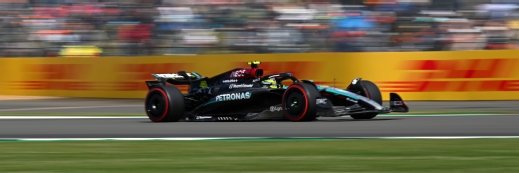McLaren uses high-speed data analytics to gain Formula 1 edge
The McLaren Group uses high-speed data analytics as it seeks a competitive edge for its Formula 1 racing team engineers
The McLaren Group has turned to high speed data analytics as it seeks a competitive edge. The company is known for its Formula 1 cars and its racing team, but it also supplies medical monitoring to Birmingham Children’s Hospital and telemetry to San Francisco’s BART transport system.
Stuart Birrell, CIO of McLaren – and former CIO at Gatwick Airport – describes how the racing team’s engineers are beginning to use SAP’s in-memory database HANA. “We are still in test mode, but seeking to give the engineers access to a wide range of data that it has taken time to get to before; that is, not quickly enough.”
The McLaren Group is best known for Formula 1 racing. It deploys telemetry systems, which use data generated by racing car sensors – there are 160 on each car, generating 1GB of raw data in each race. It is using HANA to do real-time analysis of that data in combination with historical data and predictive models. That is pumped to the garage on the spot and mission control back in Wokingham.
Birrell says: “We can run queries like ‘show me all races in last three years where we ran a particular suspension strut at a particular setting’. How could you query that in a traditional database? It would take hours. We use MatLab at the top level to model and compare, say, fluid dynamics, wind tunnel and telemetry time-sequenced data. For that query we got a result from 13 billion data points in 100ms.”
The team’s time to fix a problem from testing on a Friday, through qualification on a Saturday to the race on a Sunday is highly pressured. They hope HANA will help them build the queries to solve problems, like understeer on a particular corner, in the nick of time.
For more on high-speed computing in Formula One
Birrell confirms that the company’s use of SAP more generally is linked to its growth to a point where it needed something to make it more efficient. "We needed common processes across functions and commonality of process and controls across the three businesses on the manufacturing side – applied technologies, automotive and electronics. But we cannot encumber the businesses, we need to keep our agility," he says.
“However, that agility does come at a cost, so we need efficiency too. It is a balancing act. We can’t overautomate too soon, we need to get predictability first. That’s an iterative process and timing is key.”
McLaren is one of the first SAP reference customers to sign up for the full ERP Business Suite on HANA. “The HANA system is being built, as we speak, in Walldorf”, he said, interviewed at Sapphire 2013 in Orlando last week. The next 18 months will be given over to full deployment.
McLaren also works with pharmaceutical company GSK on human telemetry, he says. And it works with Birmingham Children’s Hospital, where its telemetry software monitors intensive care systems, adding a predictive element. That can mean a 10-minute gain if a patient is in trouble, an early warning system similar to that used for the F1 racing cars.
The telemetry is also used in rugby, where Martin Johnson’s 2011 Rugby World Cup team benefited from data analysis. “They measure the effort put into a tackle, sprint, or scrum and manage the training regimes accordingly”, says Birrell.
Other sporting uses of the company’s technology are cyclist Mark Cavendish’s McLaren Venge bike and, with UK Sport, during last summer’s Olympics.











